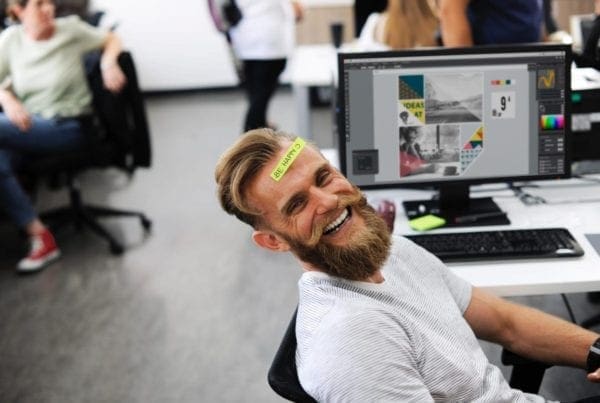Why Toys ‘R Us and Blockbuster Died
If you’re a Gary Vee fan, you’ve probably seen his video about Why Toys ‘R Us Went Bankrupt. Gary believes Toys ‘R Us’ demise happened for 3 reasons:
- They didn’t believe in the internet
- They didn’t innovate
- They rested on their laurels
Similarly, Gary’s view on Blockbuster in his video entitled How Netflix Killed Blockbuster points to a similar fate:
Blockbuster claimed in their reporting that customers enjoyed:
- Physically going into their stores
- The ability to read the back of the DVD cases
- Running into their neighbor
- Picking up popcorn on the way out
As Gary humorously states on behalf of most of us, “I don’t know about you guys but here is the experience I like: laying naked in my bed and pressing one f-ing button.”
This all comes down to the experience. What is your business doing to add to or detract from an ideal customer experience?
But Do Brick and Mortars Need Innovation?
If you’re asking whether you’re suddenly expected to create a Willy Wonka-type experience to every single customer that walks into your store, the answer is no.
But that doesn’t mean you can stop innovating, shifting, and changing. Let’s go back to Toys ‘R Us. What were their downfalls?
- They didn’t believe in the internet
- They didn’t innovate
- They rested on their laurels
Whether you’ve got a nationwide billion-dollar toy store or a local neighborhood bistro, we can all learn from businesses who fail.
Ask yourself these questions:
- What technology innovations am I resisting right now? What am I willing to take a chance on?
- What cultural shifts am I resisting right now? What am I willing to try?
- What are some ways I can stop resting on my laurels and start being more proactive?
Customers Know When You’re Slacking
Whether customers or clients can articulate it or not, they know when a business is innovating or going backward.
Earlier this year I visited a coffee shop in the Chattanooga, Tennessee Arts District called Rembrandt’s after hearing so many excellent reviews.
I walked inside, looked around, and walked back out. My feeling was, “This place is not for me.” Now, because I assess business micro-experiences for a living, I’m able to articulate what I felt but remember, most customers can’t.
Here’s what I experienced in a matter of about 60 seconds to bring me to that conclusion:
- The carpet smelled like an old restaurant
- It was about 5 degrees too warm
- It was extremely loud
- The only place left to sit was the worst seat in the house facing the wall next to a loud group
- The menu had too much food and other options on it (meaning, they don’t specialize in coffee)
- Their counter was so cluttered and busy
- The decor was extremely outdated
- Their branding and general look and feel was outdated
- I felt immediately agitated and overwhelmed
Innovation doesn’t have to necessarily be adopting some new technology. Sometimes, innovation for a restaurant or cafe can mean subtle, seemingly insignificant changes.
That type of business attracted the 50+ crowd really well, but it’s losing and will continue to lose its millennial customers unless it adapts and innovates.
For the record, I left that shop and walked 7 minutes away to Provisions Coffee Shop located inside the Edwin Hotel. I knew it was the coffee shop for me by a few photographs and the branding that is so obviously following the coffee shop trends of:
- Clean, modern, simple
- Subtle colors, clean lines
- A feeling of “open-air”
- Little to no focus on their food menu, setting themselves up as a coffee authority
- Standing counter to work with modern decor
- Lower temperature, quiet atmosphere
The Moral of the Story
Innovation won. Innovation wins. Innovation will always win.
Whether you finally accept some huge technological shift in your company or just unclutter your counter, any innovation or change is good. Get in a habit of accepting cultural shifts with open arms and encouraging your employees to be proactive with continual innovation! Because as Gary V says, “When you don’t innovate, you die.”




